The Col de la Madone is the climb used by many Monaco-based pros to test their form. If the top of the climb can be a finish line, it’s also a gateway, once over the pass a range of riding options open up. When riders want a longer and more Alpine style climb the Col de Turini is often the default choice.
Made famous by motorsport and picked by TV pundits Top Gear as one of the top-10 roads in the world it is also a superb place for cyclists.
 The Route: there are three routes to the top. This is the “pro” one, or at least the route often used by those heading inland from Nice or Monaco, the south-eastern route. Starting in Sospel in the Alpes-Maritimes department in south-eastern France the D2566 heads north. 24km long, the climb rises 1,260m with an average gradient of 5.1%.
The Route: there are three routes to the top. This is the “pro” one, or at least the route often used by those heading inland from Nice or Monaco, the south-eastern route. Starting in Sospel in the Alpes-Maritimes department in south-eastern France the D2566 heads north. 24km long, the climb rises 1,260m with an average gradient of 5.1%.
The Feel: the coast and its bustle is already a far away in Sospel. Just a few kilometres by flight but immeasurably longer if assessed by other metrics from population density, real estate prices or traffic. There’s enough to get water and food if you need it. The gradient is soft to start with, you quickly leave behind the town. Well appointed villas give way to crumbling and abandoned stone buildings.
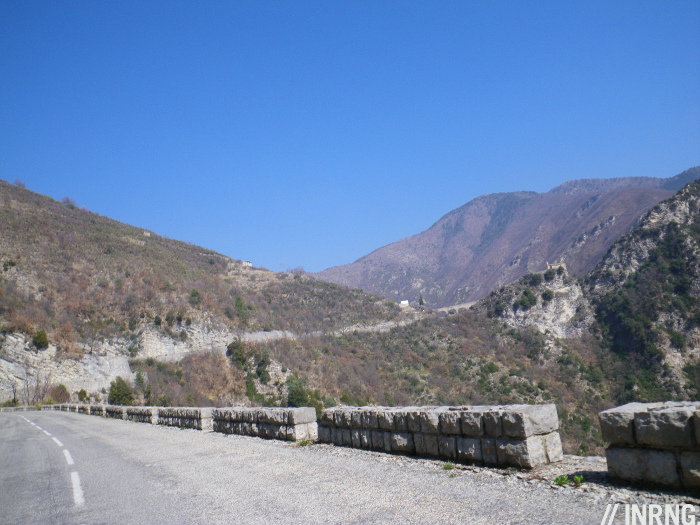
In no time you reach the Gorges du Piaon where the road is cut into the cliff. The rectangular stone blocks by the road offer little to prevent accidents, the road has the feel of castle ramparts. Soon the first hairpins arrive, tight bends that allow the road to hug the cliffs and after several sets you reach a bend with a bridge over the road for the chapel of Notre Dame de Menour, an obvious landmark. It marks the end of the first climbing section, the road is only a gentle drag for the next part, you can get into a lower position if you want to make up time.
After the false flats the village of Moulinet appears. It’s name means “little mill” but mouliner is slang for pedalling with a high cadence and a useful tip because the road is about to rear up. There’s a café if you want a breather, otherwise some steep hairpins lead out of town. It’s after Moulinet that road feels more wild and the gradient gets steeper. The road is rougher, at times a patchwork quilt of repairs and there’s even a damp tunnel too. The road is increasingly shaded by pine trees, a sign of the altitude. Soon a series of wide hairpins begin, these are wide and well-engineered, a lot of work went into this road although it’s so empty. You’ve got more chance of seeing a pro from Sky, Tinkoff or BMC here than a car if you go on a mid-week morning. The final part of the climb, thanks to the increased gradient, seems to last a long time.
The “summit” is a proper place, a four way crossroads. Button ski lifts dangle idly, and across the road there are hotels and bars, one has erected a large blue sign to mark the col. But look beyond for the views of the Alps.
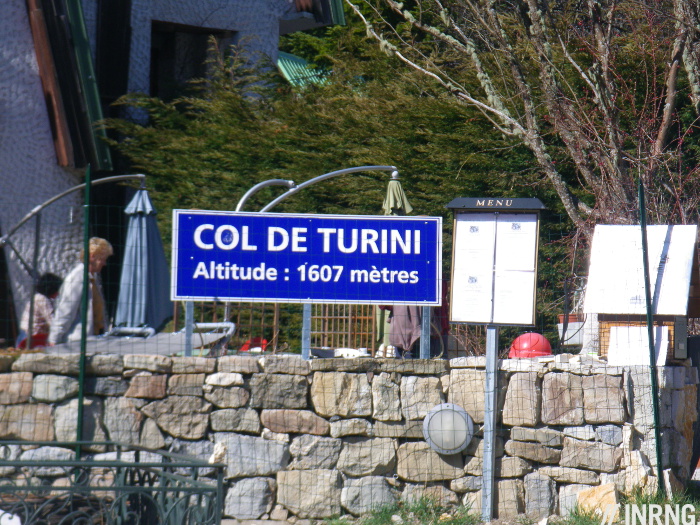
Ride On: if you’ve made it to the top then there’s no need to turn around and ride back the same way
- Turn right for the Authion, a dead end road which climbs up to offer more views, worth it for the scenery and views across the Alps
- Go straight to drop down to La Bollène-Vésubie, the car rally route in reverse, and from where you can loop back to the coast
- Go left, my tip, through Peïra-Cava and then, at Baisse de la Cabanette, descend to Lucéram. The route allows you to take a descent with an ingenious set of hairpins that stick out like military epaulettes on the shoulder of the mountain.
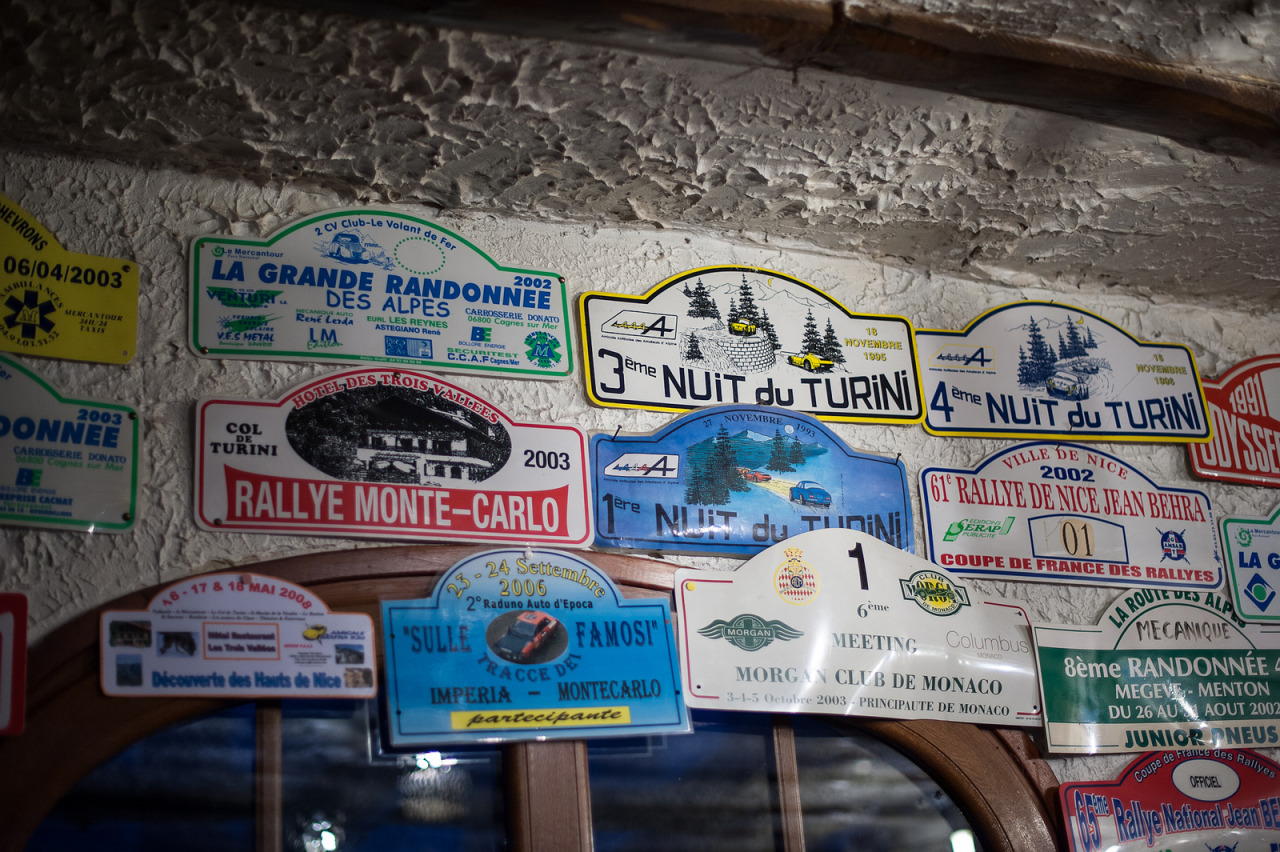
Fame: for cycling this is a training road but for motorsport the Turini is legendary for its importance in the Monte Carlo rally. The rally climbs up from La Bollène and then descends the climb described above. It’s one of the few mountain passes to feature in video games.
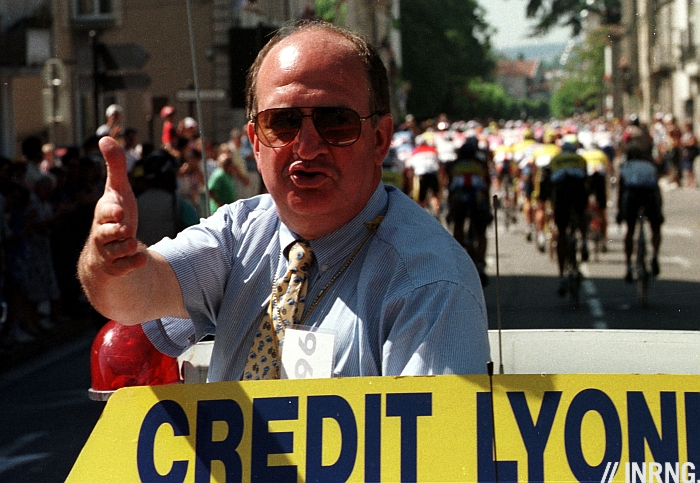
History: the area has seen plenty of fighting and has alternated between French and Italian territory over the last few hundred years, or at least the Kingdoms of Sardinia and Piedmont as proxies for what we know as Italy today. This explains the Italian-sounding “Turini” name.
It’s only been climbed three times by the Tour de France in 1948, 1950 and 1973. Newly retired Tour de France director Jean-François Pescheux (pictured) was asked if he had any regrets about his time as race route selector. There were two: that some cities had adopted too much street furniture to block the Tour from visiting; and that the Southern Alps in France were almost off limits given the area’s traffic problems. To cross the Turini and head towards Nice or another coastal town for the stage finish would meaning closing many roads for half a day and prompt traffic gridlock in an already crowded tourist destination. The road is closed for a motor rally but this is in January, a time when the area is hibernating.
Travel and Access: Nice is well-connected by road and rail and the airport has many connecting flights and from there it’s a ride over the hills to Sospel, you can drive or even get the train too. The coast can make a good base for a week’s cycling. Avoid July and August when many come for the holidays, the roads are choked by tourists although heading to the hills is to escape to another world.
Tip: The coast is famous for good weather and the mountains inland share a lot of this but the temperature drops with altitude and distance from the sea. It’s easy to start a ride at sea level in the sunshine and then get caught out in the clouds at 1,500m.
Photo Credits: Main view by Wikipedia; rally plates by Flickr’s Steve Harris.
More roads to ride at inrng.com/roads

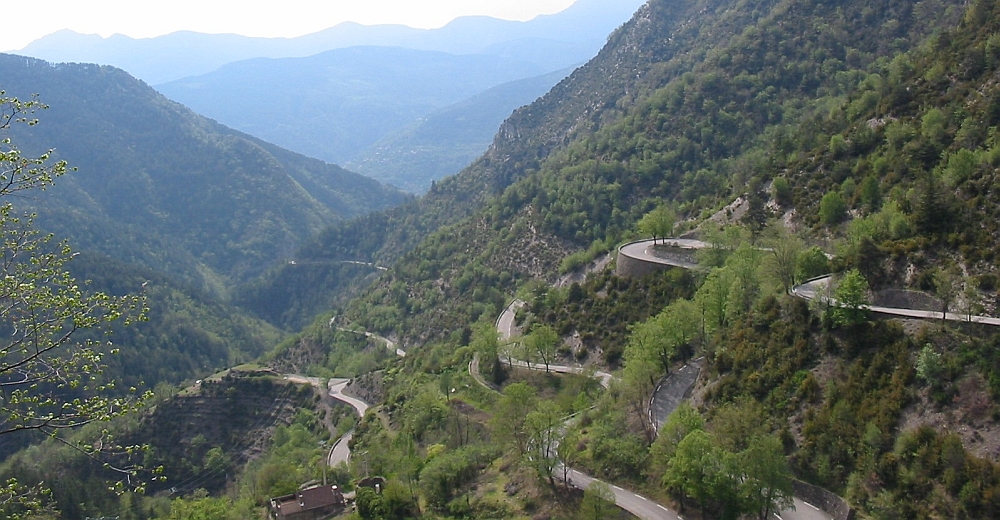
My route was from Nice through Cantaron then the D21 to L’Escarene which sets you up for ascending the descent that Mr InRnG proposes , so touching Luceram and then there is the option to take a right turn for the col de Braus d further on peiri-cava which appears to be something of a tourist grotto as you come close to your summit . By choosing this route it meant avoiding most of the coastal mess which is Côte d’Azur roadways .
A sweet ride all in and if there is a next time I’d like to follow the Sospel version.
A magic road. I think it’s also been used for car chase scenes in James Bond films too.
Do you have any idea how painful it is to read these enticing articles while there’s 4 inches of snow on the ground, roads are icy, and it’s 25F (-5C) outside – and being in the US. Talk about making me stir-crazy. Led me to pull out some France/Italy Michelin maps and see if I could find this climb. My France maps were the wrong scale – only showed the col de Brouis, which is the first one on the road north of Sospel. But I found it on my Italy-Northwest map.
Now I dreaming. Of next summer and plane trips to places far away.
But thanks for the inspiration – even if it is painful right now!
If you mean Col de Braus, that’s one well worth doing also., I’m not sure whether inrng was talking about that for the descent (ie. The hairpins), but there’s a set of engineered ‘lacets’ that rivals any in the world. ( and again, they’ve featured on Top Gear).
It’s a brilliant part of the world, and the scenery is very different to 30kms North where the southern alps really get started.
Thanks for the blog, inrng.
Braus has some good bends too, plus the memorial at the top to René Vietto.
No, col de Braus is west of Sospel. Col de Brouis is north of it. Whole area looks fantastic.
I want to take six months and just explore all these Roads to Ride!
I’m there with you, when do we start? Oh, what should I say to my boss?
Spent a week in this area with friends, based in Nice, last year when the TTT was on there. We did Madone and Turini one day. Fabulous ride, even the descent was magical. Fantastic area for riding, once you’re out of Nice itself (which is a great base despite the crowds). There is a good “back road” from Nice toward Mentone, on the ridge behind the coast roads and cities (great view of Monte Carlo for example), though we took the train on this day. I highly recommend the area.
Thanks for this post, Inrng. The Turini should be within the top five of any list of roads to ride. While the whole area is the cyclist’s Eldorado the Turini stands out as one of the “monuments” in that area.
If you can do it only once I would recommend climbing the western side from La Bollène-Vésubie though. Maybe even starting in Menton and warming up on the Col de la Madone? Preferably on a sunny working day or on a Saturday, so that you arrive at the base of the Turini climb right after noon (while apparently everybody in the area has some lengthy week-end lunch and siesta) in June or the beginning of July. I’ve never ridden a road so quiet in terms of traffic and other man-made noises while still being so noisy. What must have been millions of cicadas cheered me on for nearly the whole way up. And not only once but each time I went up there at that time of year. The gradient is nearly consistent with a shade over 7% on that side so if you stay seated there is not much need to change gears. Just go into cruise control, let your legs do their work and enjoy the ride and the concert. Combined with the solitude you will feel and what must be more than 100 curves and serpentines climbing up there eventually turns into some kind of exercise in meditation. Don’t forget to refill your bidons in La Bollène-Vésubie before you enter the furnace which starts right after that town.
For the descent – if you don’t want to go down the same way you came up – you have two main choices. The one running through Peira-Cava splits up right after that town and if you turn right there further options will pop up. But no matter which way you choose they all offer some big fun for those who love descending. If you have started your trip at the coast I would choose the descent over Sospel, then go up the little climb to the Col de Castillon and enjoy another crazy curvy road back into Menton for what will be a day in the saddle you will most likely never forget.
Excellent advice, thanks.
For those not visiting the area, the tip about riding at midday is very useful, traffic levels can drop off a lot, especially in rural areas.
The Roads to Ride features are by far my favorite posts on your site. While I can never match the athletic abilities of the pros, everyone can tackle the same roads they use, albeit at a much slower pace. Mr. Inrng, I know it’s a bit far away from your typical stomping grounds of France and Italy, but I highly recommend you take a cycling holiday to Girona in Catalunya. The riding around the city is phenomenal and the local climb, Rocacorba, would make for a great write-up . Tough, storied climb, silent roads and a gorgeous view at the top.
I’ve been before and wasn’t too impressed but it was several years ago, it’s worth returning too.
Excellent riding around Girona and Rocacorba is a great test. The dozens of pros who live there can’t be wrong.
There’s excellent riding around Girona and Rocacorba is a great test. The dozens of pros who live there do so for a reason.
yes , great weather, a variety of routes, flat, climbs etc, proximity to a good airport, and , oh, yeah… No pesky criminal charges if caught with a doping products unlike in France a few kilometers away.
Have had some great meals there too tj, but if doping is your thing, don’t let me stop you. I’m just enjoying getting out on a bike.
excellent, thanks. I once sat at the bottom of Turini in the very cold rain trying to get courage to get my bike out of the car and climb. Almost in tears (if u know me, u believe this), I finally gave up and headed home. One day ….. on my endlessly long list of hope-to-climb climbs.
Almost an achievement to have scaled a climb omitted by you, almost because I wish you better circumstances next time.
As an aside when doing these pieces I never take a camera with me and rarely a smartphone either. So getting images is an issue. But when seaching for Col this and Passo that… Will is almost always there.
Ha, one day hopefully we’ll ride together and I’ll take (great) photos of us together that preserve your anonymity.
On a brighter note, driving back to Genève from that failed Turini ascent, the weather cleared a little and I cycled into the Vercors, visiting Col de Bacchus. Cycling to a col dedicated to the God of Vine must be a good omen. Cheers.
Keep up the unbeatable work.
For cyclists that mountain bike: an old blog post from a French friend describing roads to Turini, but then he rides far higher (on good but unpaved roads). http://cycols.com/index.php/2008/10/05/lauthion-par-le-col-de-turini/
Will,
thank you very much for that precious link. I have put that ride on my bucket list now. Have been so many times on top of the Turini but never explored that road. A big mistake obviously. Can’t wait to correct it.
Will,
thank you very much for that precious link. I have put that ride on my bucket list now. Have been so many times on top of the Turini but never explored that road. A big mistake obviously. Can’t wait to correct it.